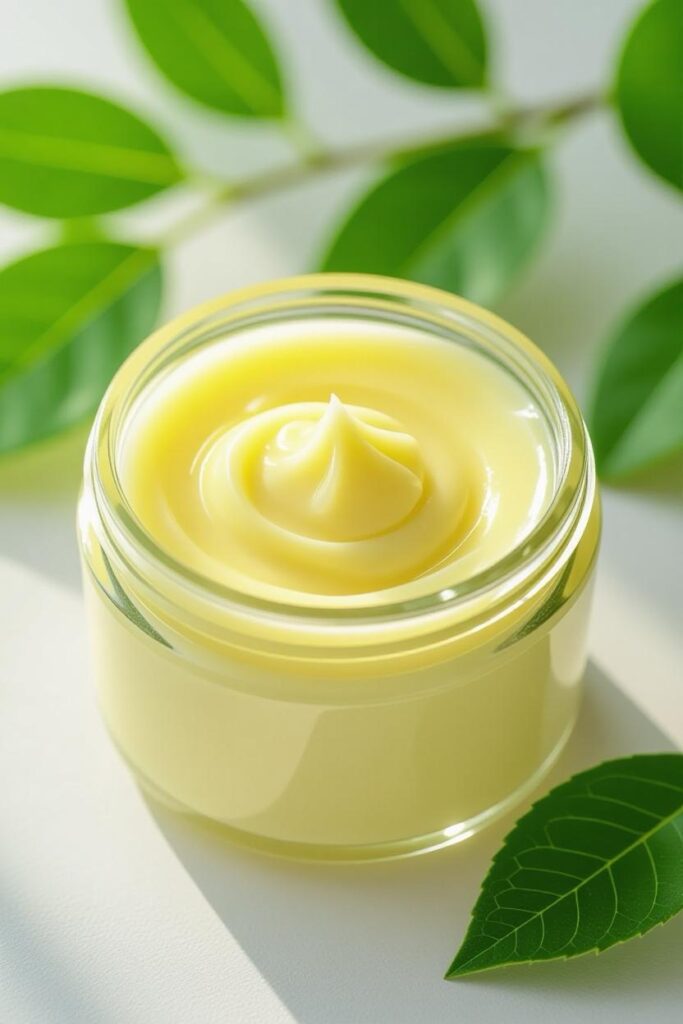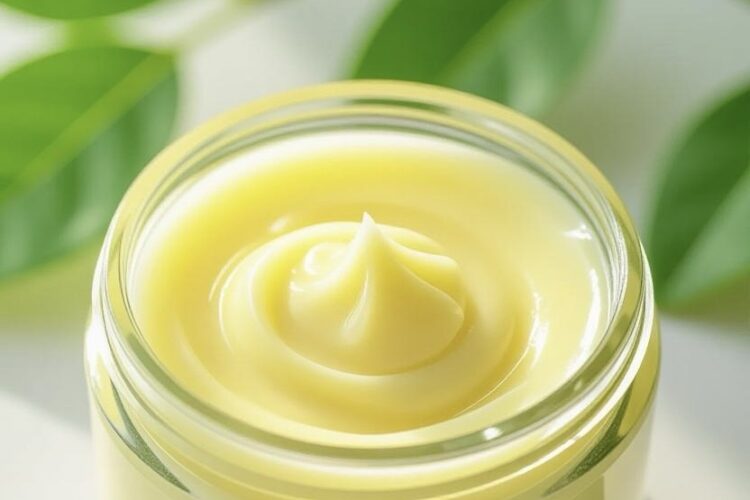Beef tallow, a natural skincare ingredient from rendered beef fat, is gaining popularity for its hydration and nourishment. Sourced from grass-fed, pasture-raised cattle, this nutrient-rich moisturizer mimics the skin’s barrier, delivering vitamins A, D, E, and K, plus essential fatty acids for anti-aging and skin repair. Ideal for dry or sensitive skin, it soothes eczema, psoriasis, and acne without clogging pores. Available as tallow balm, cream, or whipped tallow, it’s used on face, body, and hair. Pair with aloe vera, raw honey, or frankincense for added benefits. Historically used by ancestors, this organic, non-toxic alternative offers a radiant glow but may not suit oily skin. Patch-test first and choose ethically sourced options for best results.
Long Version
The Rise of Beef Tallow in Skincare: A Natural Revolution
In the ever-evolving world of skincare, few ingredients have captured attention quite like beef tallow. This trend has transformed rendered beef fat—once primarily associated with cooking—into a sought-after hero for skin health. What began as a niche interest has exploded into mainstream animal-based skincare, drawing enthusiasts who swear by its ability to deliver hydration, nourishment, and a radiant glow without the harsh chemicals found in many commercial products.
Beef tallow’s appeal lies in its simplicity and efficacy as a natural ingredient, free from synthetic additives. Sourced from pasture-raised cattle, ethically sourced grass-fed tallow or grass-finished tallow offers a non-toxic alternative that mimics the skin’s natural barrier. Unlike synthetic moisturizers, it absorbs deeply, providing multipurpose benefits for face, body, and even hair. But to understand its modern resurgence, we must look back to its historical use.
Historical Roots: From Ancestors’ Skincare to Modern Revival
Long before the advent of lab-formulated creams, our ancestors relied on beef tallow as a staple in skincare. Derived from beef suet—the raw fat around the kidneys—this nutrient-rich substance was used by ancient civilizations to soothe and protect the skin from harsh environments. Historical records show it was a go-to for calming irritated skin, healing cracked skin, and maintaining overall skin barrier integrity. In colder climates, it served as a deeply moisturizing balm against wind and dry air, much like how it’s celebrated today for dry skin relief.
This ancestors’ skincare tradition faded with the rise of industrialized cosmetics, but recent interest has revived it. Users highlight its organic purity, often sharing before-and-after stories of transformed complexions. The beefy smell, a subtle earthy note in unrefined versions, is even embraced as a sign of authenticity, though many modern formulations mask it with essential oils.
Understanding Beef Tallow: Composition and Sourcing
At its core, beef tallow is rendered beef fat, purified through a slow heating process to remove impurities, resulting in a smooth, spreadable consistency. Opting for grass-fed tallow or grass-finished tallow ensures higher quality, as these come from pasture-raised animals fed natural diets, leading to ethically sourced products richer in beneficial compounds. Grass-fed varieties are packed with essential fatty acids, including oleic, palmitic, and stearic acids, which closely resemble the fatty acids in human skin.
What sets it apart is its biocompatibility—it mimics the skin’s natural barrier, allowing for better absorption and repair and regeneration at a cellular level. Vitamins A, D, E, and K abound, providing anti-aging properties by promoting collagen production and reducing fine lines. These fat-soluble vitamins, combined with conjugated linoleic acid (CLA), offer anti-inflammatory effects that calm redness and support skin health.
For those exploring alternatives, buffalo tallow provides a similar profile, though it’s less common and often used interchangeably in formulations.
Key Benefits for Skin Health
Beef tallow excels in delivering deep hydration and nourishment, making it ideal for sensitive skin and dry skin types. Its fatty acids strengthen the skin barrier, locking in moisture and preventing transepidermal water loss. Users report a radiant glow after consistent use, as it soothes inflammation and promotes even tone.
For acne-prone skin, its non-comedogenic nature—meaning it won’t clog pores—combined with antimicrobial properties, helps combat breakouts without stripping natural oils. In conditions like eczema and psoriasis, beef tallow’s ability to calm and repair damaged skin has shown promising results in anecdotal reports and limited studies. It’s also effective for diaper rash, offering a gentle, protective layer that aids in healing.
Anti-aging enthusiasts value its role in collagen synthesis, reducing wrinkles and improving elasticity. Overall, it supports repair and regeneration, fostering long-term skin health.
Forms and Applications: From Balm to Cream
Available as tallow balm, tallow cream, or whipped tallow, beef tallow is versatile and multipurpose. As a moisturizer, it can be applied directly to the face for nightly routines or used on the body for all-over hydration. For hair, a small amount tames frizz and nourishes scalps.
Many prefer DIY skincare approaches, rendering their own homemade moisturizer from beef suet for ultimate control. Commercial options, often organic and non-toxic, come in unscented or scented varieties to minimize the beefy smell.
Enhancing with Complementary Ingredients
To boost efficacy, beef tallow pairs well with other natural ingredients. Sweet almond oil adds lightness, while hyaluronic acid enhances hydration. Aloe vera provides additional soothing for sunburns, and frankincense offers anti-aging synergy. Citrus oils bring a fresh scent, sunflower lecithin improves texture in whipped formulations, raw honey adds antibacterial properties, and colloidal oatmeal calms irritated skin in blends for eczema or psoriasis.
These combinations create customized tallow cream recipes, amplifying benefits like nourishment and calm.
Scientific Insights and Potential Drawbacks
Research supports beef tallow’s biocompatibility, with studies noting its antibacterial and anti-inflammatory effects. It’s rich in vitamins that aid in atopic dermatitis and psoriasis relief, though more long-term data is needed. Dermatologists caution that while beneficial for many, it may clog pores in oily skin types or cause breakouts if not properly sourced. Always patch-test, especially for sensitive skin.
User experiences highlight transformations: one user cleared a persistent rash after years, another praised its eczema relief.
Practical Tips for Incorporation
Start with a clean face, applying a pea-sized amount of tallow balm as your final step. For body use, focus on elbows, knees, and cracked skin. In DIY skincare, melt grass-fed tallow with raw honey for a nourishing mask. Store in a cool place to maintain whipped tallow’s texture.
For best results, choose ethically sourced, organic options to ensure purity and potency.
Embracing Beef Tallow for Lasting Skin Vitality
Beef tallow stands as a testament to nature’s wisdom, bridging historical use with contemporary skincare needs. As a deeply moisturizing, nutrient-rich powerhouse, it offers comprehensive solutions for acne, eczema, anti-aging, and beyond. Whether through a simple tallow balm or enhanced with aloe vera and frankincense, it provides a non-toxic path to radiant, healthy skin. In a world of synthetic options, this animal-based skincare gem reminds us that sometimes, the most effective remedies come from the earth itself.

Hashtags For Social Media
#BeefTallow #TallowSkincare #TallowBalm #NaturalSkincare #Skincare #BeefTallowSkincare #GrassFedTallow #OrganicSkincare #DrySkin #EczemaRelief #Psoriasis #CleanBeauty #NonToxicBeauty #AnimalBasedSkincare #WhippedTallow #TallowCream #HolisticSkincare #NaturalBeauty #SkinCareRoutine #GlowUp #AntiAging #Hydration #SkinBarrier #VitaminsForSkin #DIYSkincare #ViralSkincare #TrendyBeauty #PureTallow #TallowBenefits #HealthySkin
Related Questions, Words, Phrases
beef tallow skincare | benefits of beef tallow for skin | how to use beef tallow on face | is beef tallow good for dry skin | beef tallow moisturizer recipe | grass-fed beef tallow balm | beef tallow vs coconut oil for skincare | diy beef tallow cream at home | beef tallow for acne treatment | nutrient-rich beef tallow skincare products | historical uses of beef tallow in beauty | beef tallow for sensitive skin care | whipped beef tallow lotion benefits | ethically sourced beef tallow for hydration | beef tallow anti-aging properties | best beef tallow brands for skincare | how does beef tallow mimic skin barrier | beef tallow for eczema relief | organic beef tallow face moisturizer | beef tallow and essential oils blend | side effects of using beef tallow on skin | beef tallow for psoriasis management | homemade beef tallow body butter | beef tallow vitamins for skin health | pasture-raised beef tallow skincare routine | beef tallow for radiant glow | non-toxic beef tallow alternatives to creams | beef tallow for hair nourishment | beef tallow balm for cracked skin | beef tallow with aloe vera for soothing | beef tallow fatty acids benefits | beef tallow for diaper rash remedy | animal-based skincare with beef tallow | beef tallow repair and regeneration effects






